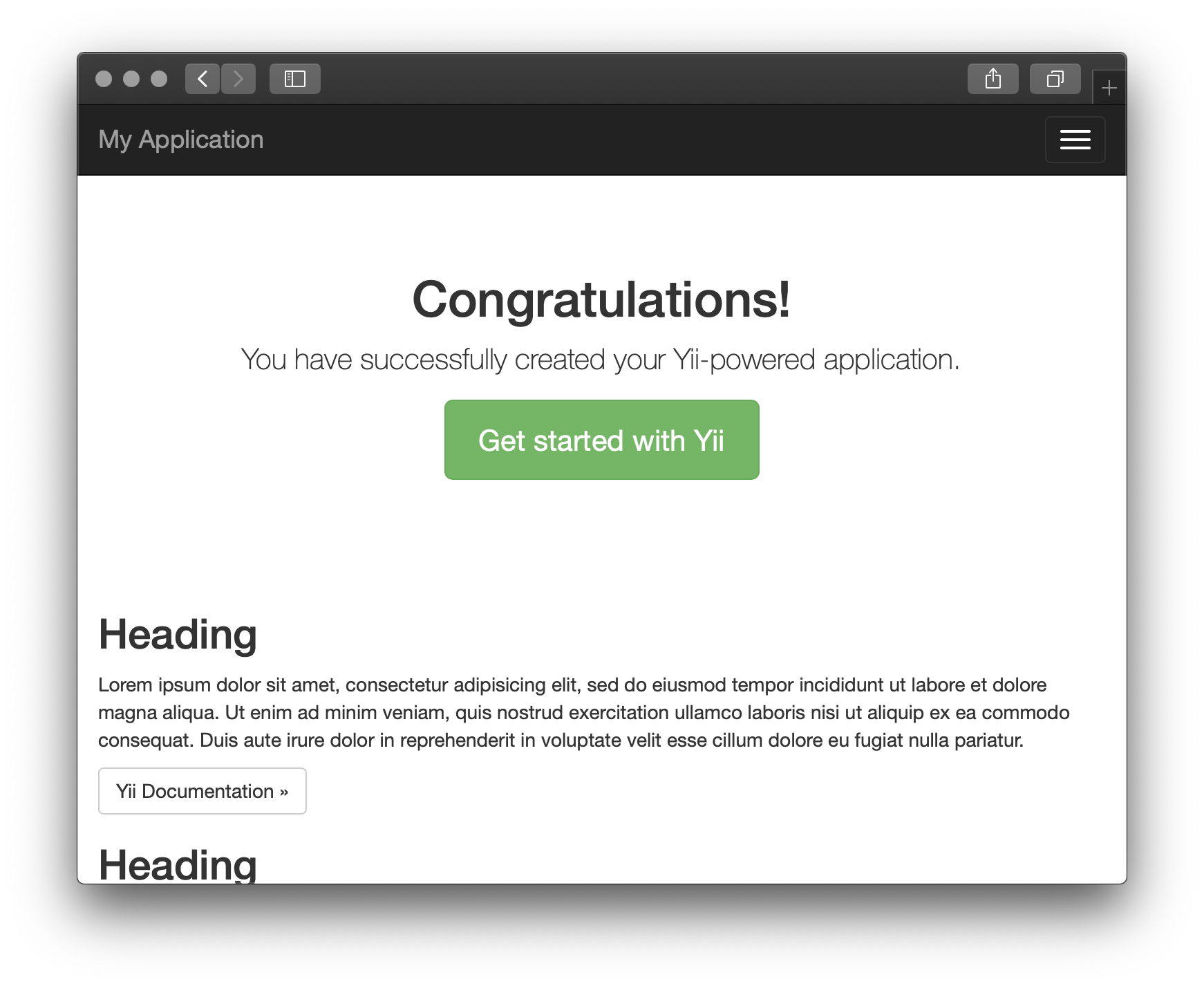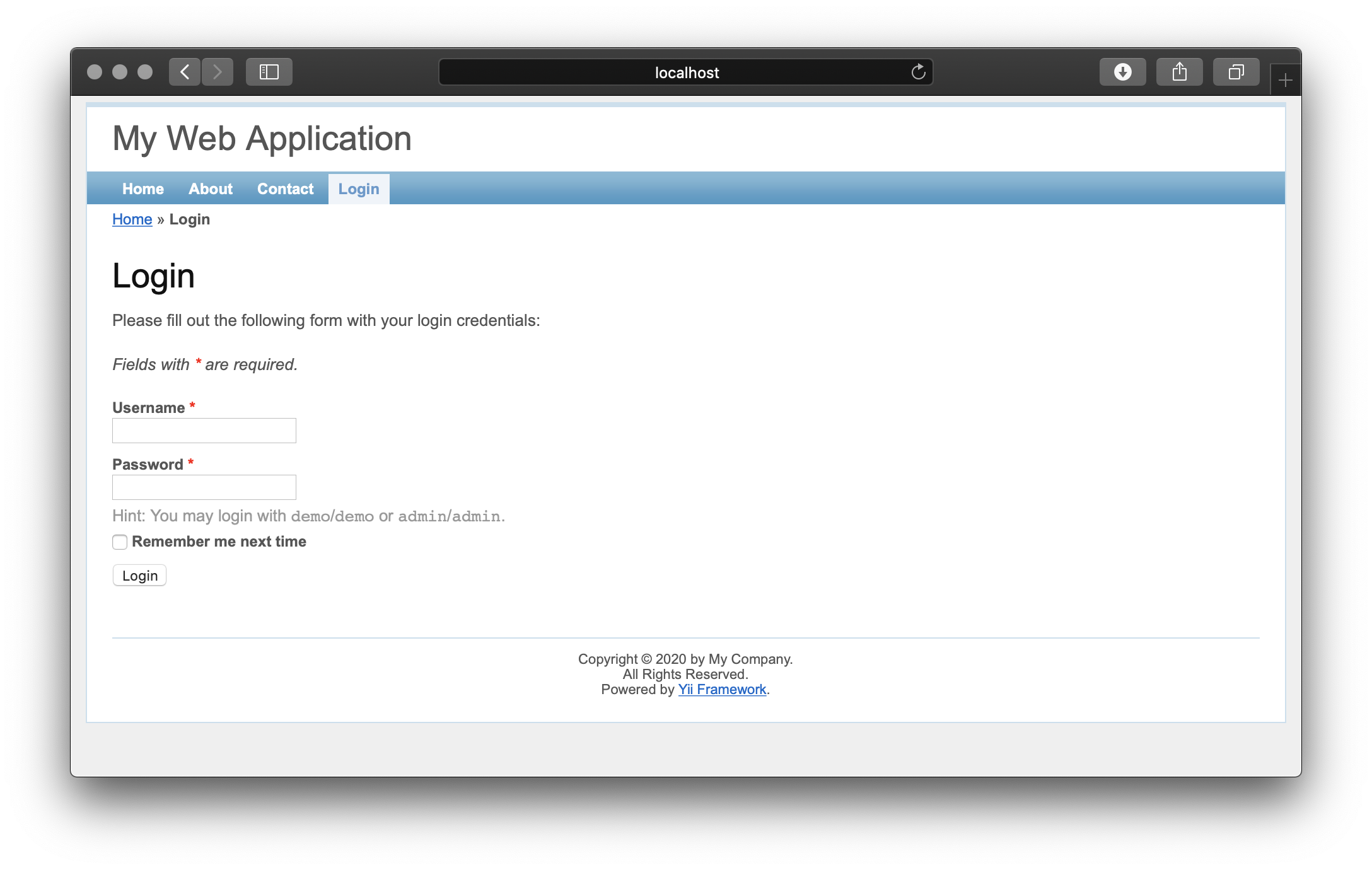Yii§
To run apps based on the Yii framework versions 1.1 or 2.0 using Unit:
Install Unit with a PHP language module.
Next, install Yii and create or deploy your app.
Here, we use Yii’s basic project template and Composer:
$ cd /path/to/
$ composer create-project --prefer-dist yiisoft/yii2-app-basic app
This creates the app’s directory tree at /path/to/app/. Its web/ subdirectory contains both the root index.php and the static files; if your app requires additional .php scripts, also store them here.
Run the following command (as root) so Unit can access the application directory:
# chown -R unit:unit /path/to/app/
Note
The unit:unit user-group pair is available only with official packages, Docker images, and some third-party repos. Otherwise, account names may differ; run the ps aux | grep unitd command to be sure.
For further details, including permissions, see the security checklist.
Next, prepare the Yii configuration for Unit (use real values for share and root):
{ "listeners": { "*:80": { "pass": "routes" } }, "routes": [ { "match": { "uri": [ "!/assets/*", "*.php", "*.php/*" ] }, "action": { "pass": "applications/yii/direct" } }, { "action": { "share": "/path/to/app/web$uri", "fallback": { "pass": "applications/yii/index" } } } ], "applications": { "yii": { "type": "php", "targets": { "direct": { "root": "/path/to/app/web/" }, "index": { "root": "/path/to/app/web/", "script": "index.php" } } } } }
For a detailed discussion, see Configuring Web Servers and Running Applications in Yii 2.0 docs.
Note
The difference between the pass targets is their usage of the script setting:
- The direct target runs the .php script from the URI or index.php if the URI omits it.
- The index target specifies the script that Unit runs for any URIs the target receives.
Upload the updated configuration. Assuming the JSON above was added to
config.json. Run the following command as root:# curl -X PUT --data-binary @config.json --unix-socket \ /path/to/control.unit.sock http://localhost/config/
Note
The control socket path may vary; run unitd -h or see Startup and Shutdown for details.
After a successful update, your app should be available on the listener’s IP address and port:

Install Unit with a PHP language module.
Next, install Yii and create or deploy your app.
Here, we use Yii’s basic project template and yiic:
$ git clone git@github.com:yiisoft/yii.git /path/to/yii1.1/
$ /path/to/yii1.1/framework/yiic webapp /path/to/app/
This creates the app’s directory tree at /path/to/app/.
Next, prepare the Yii configuration for Unit (use real values for share and root):
{ "listeners": { "*:80": { "pass": "routes" } }, "routes": [ { "match": { "uri": [ "!/assets/*", "!/protected/*", "!/themes/*", "*.php", "*.php/*" ] }, "action": { "pass": "applications/yii/direct" } }, { "action": { "share": "/path/to/app$uri", "fallback": { "pass": "applications/yii/index" } } } ], "applications": { "yii": { "type": "php", "targets": { "direct": { "root": "/path/to/app/" }, "index": { "root": "/path/to/app/", "script": "index.php" } } } } }
For a detailed discussion, see Yii 1.1 docs.
Note
The difference between the pass targets is their usage of the script setting:
- The direct target runs the .php script from the URI or index.php if the URI omits it.
- The index target specifies the script that Unit runs for any URIs the target receives.
Upload the updated configuration. Assuming the JSON above was added to
config.json. Run the following command as root:# curl -X PUT --data-binary @config.json --unix-socket \ /path/to/control.unit.sock http://localhost/config/
Note
The control socket path may vary; run unitd -h or see Startup and Shutdown for details.
After a successful update, your app should be available on the listener’s IP address and port:
